My Favourite Sport Cricket – A Guide for U.S. Travelers
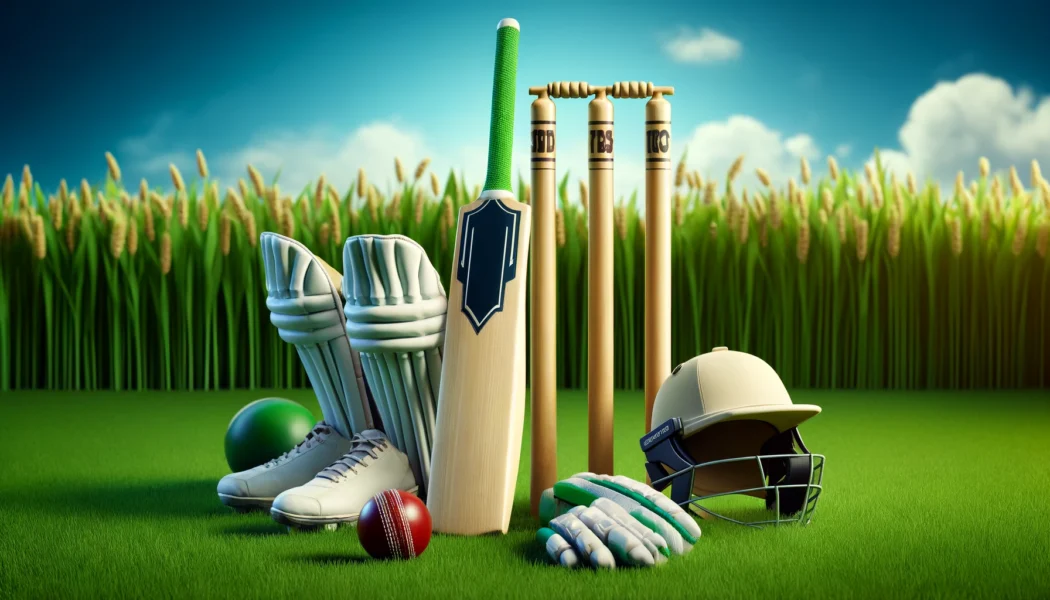
My Favourite Sport Cricket
Cricket my favourite sport – cricket is a fascinating game with a rich history and widespread popularity. Understanding cricket can significantly enhance U.S. travelers’ travel experiences, especially when visiting cricket-loving nations.
Here’s an in-depth guide covering interesting facts, basic rules, essential skills, and how to enjoy the sport.
10 Interesting Facts About Cricket
- Oldest International Sport: Cricket, my favourite sport, is one of the oldest organized sports. The first recorded match dates back to 1646. The first international cricket match was played between the USA and Canada in 1844, showcasing the sport’s early global reach.
- Cricket’s Global Popularity: Cricket is the second most popular sport in the world, with an estimated 2.5 billion fans. It is especially popular in countries like India, Pakistan, Australia, and England.
- Longest Match: The longest cricket match on record is a Test match between England and South Africa in 1939. It lasted 12 days but ended in a draw because the English team had to catch a ship back home. This match exemplifies the endurance and strategic depth involved in Test cricket.
- Origin of “Ashes”: The Ashes series between England and Australia is one of the most storied rivalries in sports. The name originated from a satirical obituary published in a British newspaper in 1882, stating that English cricket had died and “the body will be cremated and the ashes taken to Australia” after England’s loss to Australia at The Oval.
- Sachin Tendulkar’s Records: Sachin Tendulkar, known as the “God of Cricket,” holds numerous records, including the most runs in Test and One-Day International (ODI) cricket, with over 34,000 runs in international cricket.
- First Cricket World Cup: The first was held in 1975 in England. It was initially played with a red ball and traditional white clothing, and all matches were played during the day.
- 100-Ball Cricket: My favourite sport cricket has evolved with new formats such as T20 and the Hundred. The Hundred, introduced in England in 2021, features 100 balls per team, making it the shortest format in professional cricket.
- Don Bradman’s Batting Average: Sir Donald Bradman, often regarded as the greatest batsman of all time, has an unparalleled Test batting average of 99.94. No other cricketer has come close to this extraordinary record.
- First Hat-trick: Fred Spofforth of Australia took the first hat-trick in Test cricket in 1879 against England. A hat-trick in cricket refers to a bowler taking three wickets with consecutive deliveries.
- Cricket and Movies: Cricket has significantly influenced popular culture, including movies. The film “Lagaan,” centered around cricket, was nominated for an Academy Award for Best Foreign Language Film in 2002.
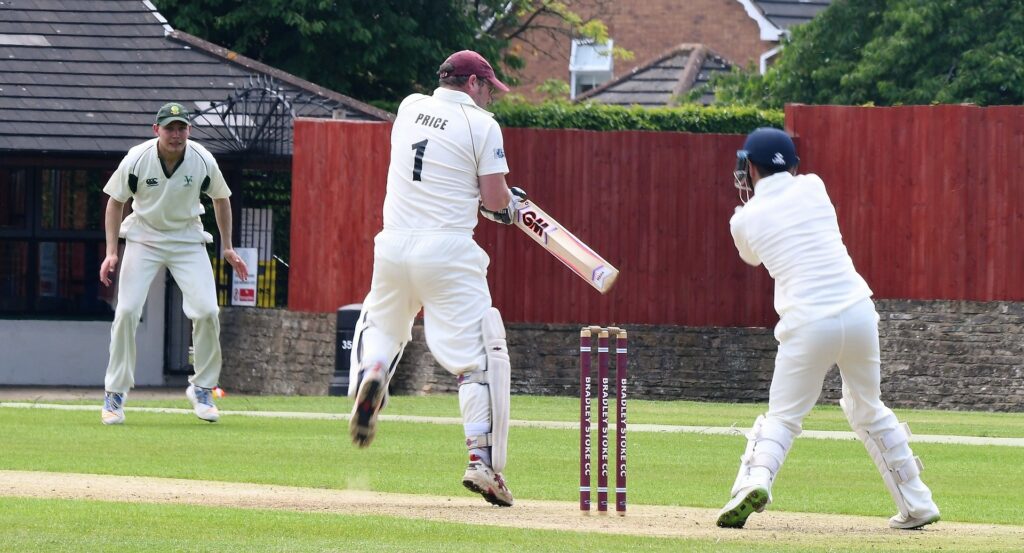
Cricket for Dummies
Cricket might seem complex at first glance, but it becomes an engaging and exciting game once you understand the basics. Here’s a simplified guide to cricket, often called “cricket for dummies,” that covers the sport’s fundamental aspects.
Understanding the Basics
Types of Cricket Matches
Cricket, my favourite sport cricket, features several formats, each with unique rules and durations. Here’s an overview of the main types of cricket matches:
- Test Matches:
- Duration: Up to five days.
- Structure: Each team bats twice (if time permits), and the game consists of two innings per team.
- Characteristics: Known for its strategic depth and endurance, Test cricket is considered the pinnacle of the sport.
- One-Day Internationals (ODIs):
- Duration: Typically lasts about 8 hours.
- Structure: Each team bats once, with a limit of 50 overs per inning.
- Characteristics: Faster-paced than Test cricket, ODIs are part of major international tournaments like the ICC Cricket World Cup.
- Twenty20 Internationals (T20Is):
- Duration: Around 3 hours.
- Structure: Each team bats once, with a limit of 20 overs per inning.
- Characteristics: The shortest and most explosive format, designed to be completed in a single evening.
- First-Class Matches:
- Duration: Typically lasts three to four days.
- Structure: Similar to Test matches but often played at the domestic level.
- Characteristics: Important for player development and domestic championships.
- List A Matches:
- Duration: Similar to ODIs.
- Structure: One-day format with 40 to 60 overs per team.
- Characteristics: Played at the domestic level and includes domestic one-day competitions.
- T20 Leagues:
- Duration: Similar to T20Is.
- Structure: It follows the 20-over format and features various domestic and international leagues, such as the Indian Premier League (IPL).
- Characteristics: Highly commercialized and attracts global stars.
How Long Does a Cricket Game Last
The duration of a cricket game varies depending on the format:
- Test Matches: Up to five days, each day consisting of approximately six hours of play, including breaks for lunch and tea .
- One-Day Internationals (ODIs): Typically last around 8 hours, including two innings of 50 overs each.
- T20 Matches: Usually last about 3 hours, with each team playing 20 overs.
- First-Class Matches: Usually last three to four days.
- List A Matches: Similar to ODIs, usually completed in one day.
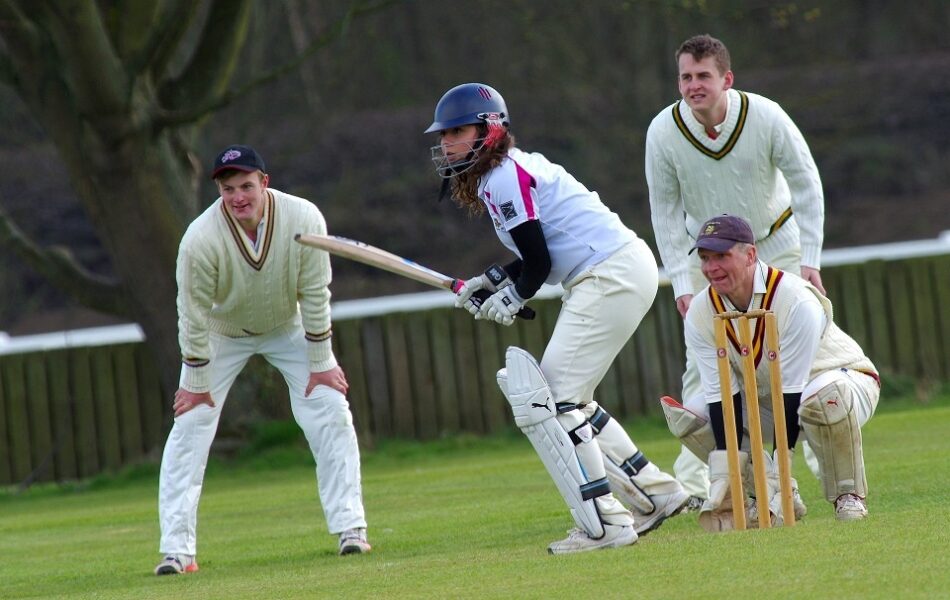
My Favourite Sport Cricket – A Guide for U.S. Travelers
How Many Players in Cricket
A cricket team consists of eleven players. Each team includes a combination of batsmen, bowlers, and all-rounders who can perform both roles. The team’s composition varies depending on the format of the game and the strategy employed by the captain.
Cricket Fielding Positions
Understanding cricket fielding positions is crucial for both players and spectators. Here’s a breakdown of some key fielding positions:
- Slips: Positioned next to the wicketkeeper to catch balls that edge off the bat.
- Gully: Located behind point on the off-side to catch edges.
- Point: Positioned square on the off-side to stop or catch balls.
- Cover: Positioned on the off-side, between point and mid-off.
- Mid-Off: Positioned on the off-side, near the bowler, closer to the pitch.
- Mid-On: Positioned on the on-side, near the bowler, closer to the pitch.
- Square Leg: Positioned square on the leg side.
- Fine Leg: Positioned finer on the leg side, near the boundary.
- Third Man: Positioned behind the wicketkeeper on the off-side, near the boundary.
Cricket Pitch Length
A cricket pitch is 22 yards (20.12 meters) from wicket to wicket. This standardized measurement is crucial for maintaining the game’s balance between bat and ball .
Cricket is played between two teams of eleven players, each on a large circular or oval field with a pitch at the center. The objective is to score more runs than the opposing team. Runs are scored by hitting the ball and running between the wickets or by hitting boundaries.
- The Pitch: The pitch is a rectangular area in the center of the field where most of the action happens. It is 22 yards (20.12 meters) long and 10 feet (3.05 meters) wide.
- The Wickets: At each end of the pitch, three wooden stumps are topped by two bails, collectively called the wicket.
- Overs: An over consists of six deliveries bowled by the same bowler. After six deliveries, a different bowler will bowl from the opposite end.
- Innings: Each team has one or two innings, depending on the format. The innings is when one team bats and the other bowls and fields.
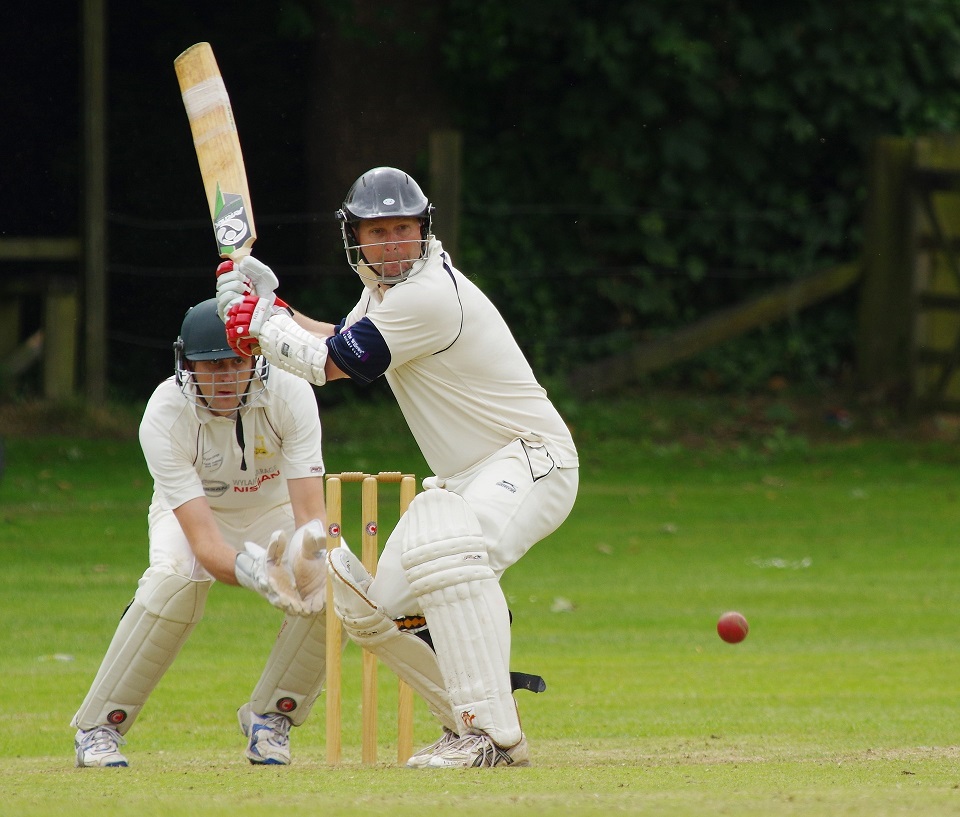
Key Elements of the Game
- Batting: The batting team tries to score runs by hitting the ball delivered by the bowler. To be effective, batsmen must develop cricket skills such as timing, shot selection, and footwork.
- Bowling: The bowler aims to dismiss the batsmen by hitting the wickets or forcing errors that lead to catches. Bowling involves techniques such as fast bowling, swing, and spin, each requiring specific cricket skills.
- Fielding: The fielding team works to prevent runs and dismiss batsmen. Fielding positions are strategically placed around the field to maximize efficiency and effectiveness.
Cricket Skills
To excel in cricket, players must master various cricket skills. These include batting, bowling, fielding, and strategic thinking. Here’s a breakdown of essential skills:
Batting Skills
- Timing and Shot Selection are key to scoring runs effectively. Batsmen must time their shots well to place the ball in gaps and avoid fielders.
- Footwork: Important for positioning and balance. Good footwork helps batsmen adjust to different types of deliveries and maintain stability while playing shots.
- Concentration and Patience: Vital for playing long innings in Test cricket. Batsmen must stay focused and wait for the right deliveries to score runs.
Bowling Skills
- Pace and Swing: These are crucial for fast bowlers. Pace bowlers use speed and swing to trouble batsmen, often aiming to move the ball through the air or off the pitch.
- Spin: Essential for spin bowlers to deceive batsmen. Spin bowlers rely on turning the ball off the pitch, using wrist or finger movements to create variations.
- Accuracy: Necessary for consistent and effective bowling. Bowlers must consistently hit the right areas to build pressure and create opportunities for dismissals.
Fielding Skills
- Agility and Speed are essential for covering ground quickly. Fielders must move rapidly to stop balls, chase down shots, and support their teammates.
- Hand-eye coordination is crucial for catching and throwing. Good coordination helps fielders take catches, make quick throws, and execute run-outs.
- Strategic Placement: Understanding fielding positions and strategies. Fielders must be positioned effectively to cut off runs, create catching opportunities, and support bowlers.
Cricket Jokes
Cricket jokes are a fun and light-hearted part of the game’s culture. Here are a few cricket jokes that can bring a smile to any fan’s face:
- Why did the cricket team go to the bank? To get their balance checked!
- Why are cricket grounds so cool? Because they have lots of fans!
- What’s a cricket player’s favorite drink? Wicket tea!
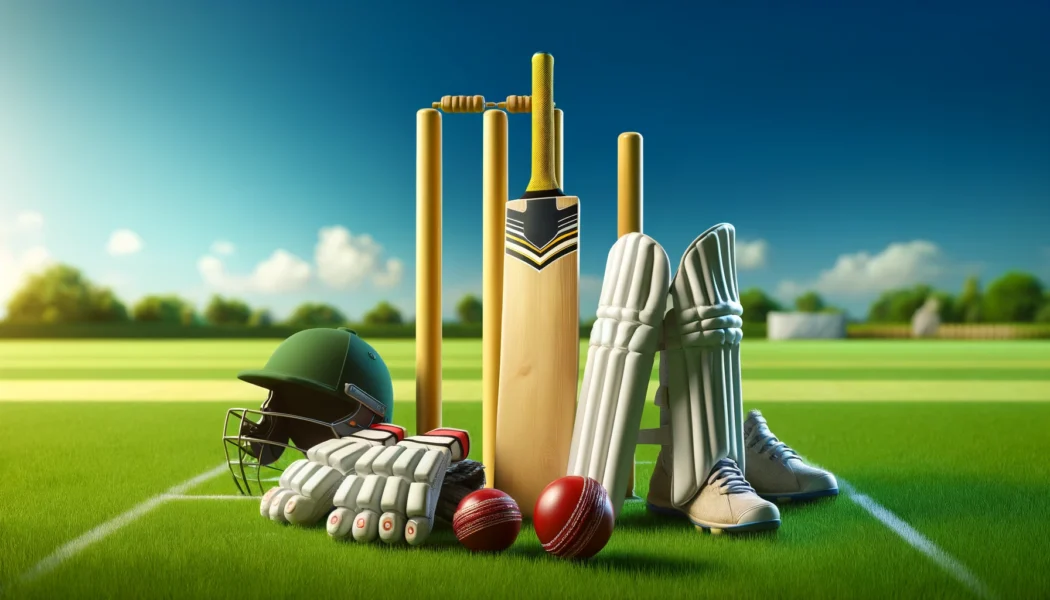
What Do You Need to Play Cricket
Cricket, my favourite sport cricket, requires specific equipment and attire to ensure players are safe and can perform at their best. Whether playing a casual game or competing professionally, having the right gear is crucial. Here’s a comprehensive guide to what you need to play cricket:
Cricket Uniform
The cricket uniform typically includes a shirt, trousers, and sometimes a sweater or jumper. Traditionally, the uniform is white, especially in Test cricket, but colored uniforms are common in limited-overs formats like One-Day Internationals (ODIs) and T20 matches. The uniform is designed to be comfortable and allow for a full range of motion.
Cricket Jumper / Cricket Jersey
A cricket jumper or jersey is essential, especially in cooler weather. It is usually made of lightweight, breathable material to keep players warm without restricting movement. The jumper often features the team’s logo and colors, enhancing team spirit and identity. In limited-overs cricket, players wear colored jerseys that match their team’s colors.
Cricket Hat
A cricket hat protects from the sun and helps keep players cool. It’s usually made of soft, breathable material with a wide brim to shield the face and neck from UV rays. Wearing a hat is crucial for fielders and bowlers who spend much time in the sun.
Cricket Cap
Cricket caps are another popular headgear choice for batsmen and close fielders. They are snug-fitting and made of durable fabric, offering protection and comfort. Caps are often part of the team’s official uniform and feature the team logo.
Cricket Helmet
Safety is paramount in cricket, and the helmet is a crucial protective gear. Batsmen and wicketkeepers wear helmets to protect against fast-moving balls. Modern cricket helmets have a grille to safeguard the face and are made from high-impact-resistant materials.
Cricket Ball
The cricket ball is central to the game. It is typically made of cork and covered with leather, weighing between 155.9 grams and 163 grams or 5.5 to 5.75 ounces. The ball’s hardness and weight make it essential to handle with care and proper technique. Red balls are used in test matches, while white balls are used in limited-overs games.
Cricket Gloves
Cricket gloves are designed to protect the hands of batsmen and wicketkeepers. Batting gloves have padding on the fingers and palms to absorb the ball’s impact, while wicketkeeping gloves are larger and designed to catch the ball safely. Good gloves are crucial for grip and protection.
Cricket Shoes for Men
Cricket shoes are specially designed to provide traction and support on the field. They typically have spikes on the soles to prevent slipping on grass. Comfortable and well-fitted cricket shoes can significantly impact a player’s performance by providing stability and reducing the risk of injury.
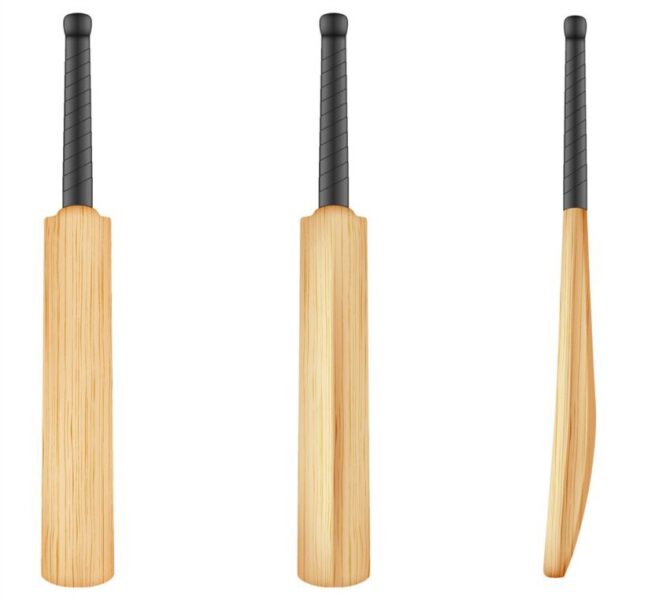
Cricket Kit
A cricket kit includes all the essential equipment needed for the game. This typically comprises a bat, balls, pads, gloves, helmet, and other protective gear. A well-stocked cricket kit ensures that players are prepared for all aspects of the game, from batting and bowling to fielding.
Cricket Requires Specialised Playing Equipment
Cricket, my favourite sport cricket, is a game that requires a range of specialized equipment to play safely and effectively. From the cricket uniform to the cricket kit, each item is vital in ensuring players can perform at their best while staying protected.
Whether you’re just starting or looking to upgrade your gear, having the right equipment is key to enjoying the game and improving your performance.
4 Cricket Tours
Tours from London, Sydney & Melbourne Australia & South Africa.
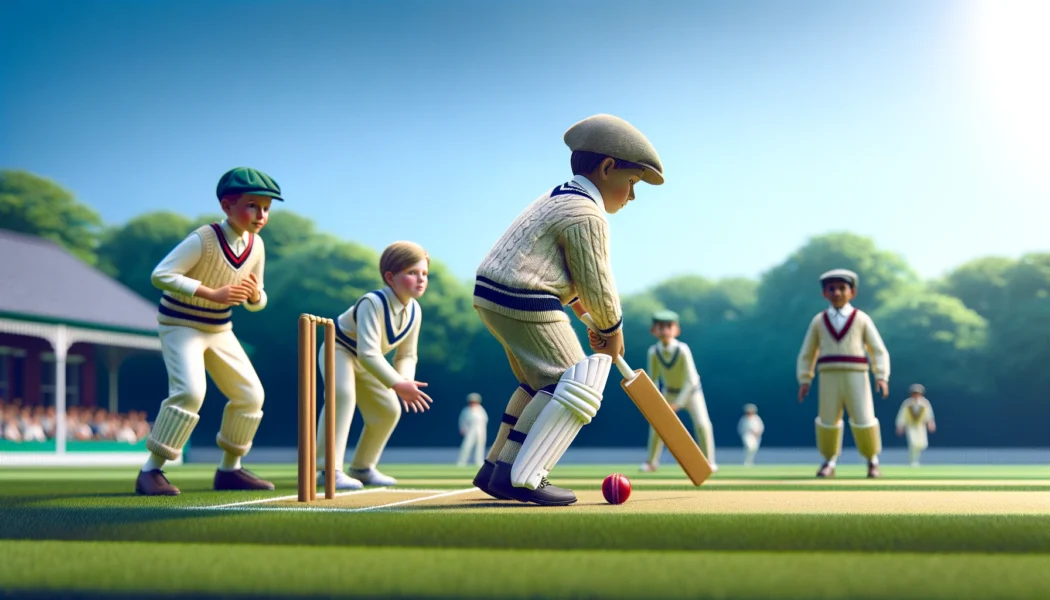
My Favourite Sport Cricket – A Guide for U.S. Travelers
Cricket for Kids
Cricket, my favourite sport cricket, is an excellent game for children to learn and enjoy. It teaches teamwork, discipline, and physical fitness. Introducing cricket to kids can be both fun and educational. Here’s a comprehensive guide to help kids get started with cricket.
Why Cricket is Great for Kids
- Physical Fitness: Cricket involves running, throwing, and batting, which helps improve overall physical fitness and coordination.
- Teamwork: Playing cricket helps kids understand teamwork’s importance in achieving a common goal.
- Discipline and Focus: Cricket requires concentration and strategic thinking, which can help improve a child’s discipline and focus.
- Social Skills: Being part of a cricket team helps kids develop social skills and make new friends.
Basic Equipment Needed
To get started with cricket, kids need some basic equipment. Here’s a list of essential items:
- Bat: A lightweight bat suitable for the child’s age and size.
- Ball: A soft cricket ball for safety.
- Protective Gear: Pads, gloves, and a helmet to ensure safety while playing.
- Uniform: Comfortable clothing, usually a cricket jersey and trousers.
- Shoes: Proper cricket shoes with good grip to prevent slipping.
Cricket Drills and Skills for Kids
Learning cricket involves mastering basic skills through various drills. Here are some key skills and drills for kids:
- Batting:
- Grip and Stance: Teach kids to hold the bat and position themselves at the crease correctly.
- Front Foot Drive Drill: Helps improve timing and shot placement.
- Pull Shot Drill: Focuses on playing shots to shorter deliveries.
- Bowling:
- Grip and Run-Up: Teach the correct way to hold the ball and approach the bowling crease.
- Target Bowling: Helps improve accuracy by aiming at specific targets.
- Basic Spin and Swing: Introduce different types of bowling, such as spin and swing.
- Fielding:
- Catching Drills: Practice catching with soft balls to build confidence.
- Throwing Accuracy: Improve throwing skills by aiming at stumps or targets.
- Ground Fielding: Teach kids to stop and retrieve the ball efficiently.
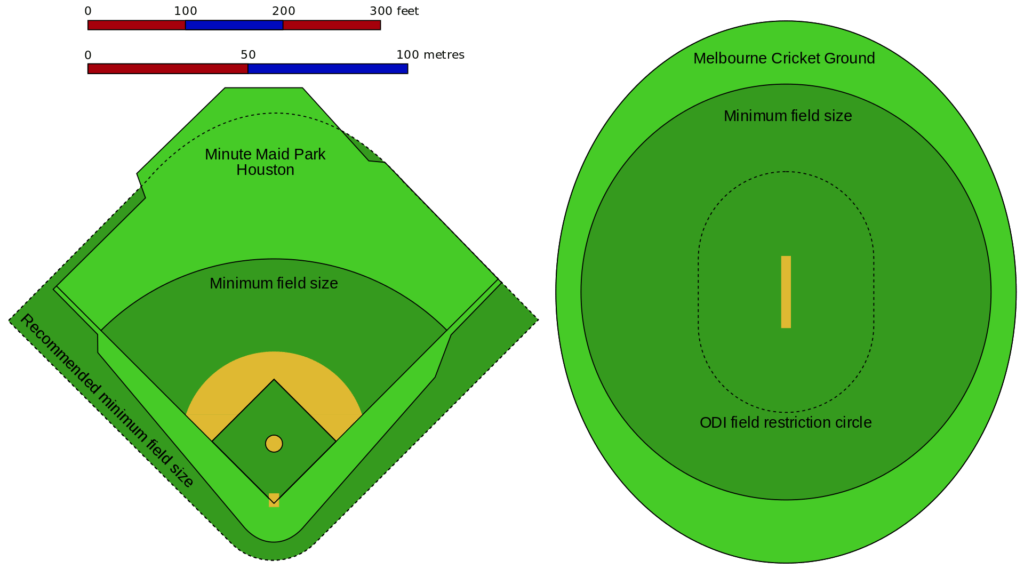
Fun Cricket Games for Kids
To keep the learning process enjoyable, integrate fun cricket games and activities:
- Mini Cricket Matches: Organize short matches with simplified rules to keep the game fast-paced and fun.
- Catch and Throw Games: Incorporate catching and throwing games focusing on fielding skills.
- Batting Challenges: Set up targets and award points for hitting them to make batting practice more engaging.
Tips for Parents and Coaches
- Encouragement: Always encourage and praise kids for their efforts, regardless of the outcome.
- Safety First: Ensure that kids wear appropriate protective gear and that the playing area is safe.
- Keep it Fun: Focus on making cricket enjoyable to foster a lifelong love for the sport.
- Skill Development: Emphasize the importance of practicing skills regularly to improve performance.
Resources for Learning Cricket
There are many resources available for kids to learn cricket. Here are some helpful websites and organizations:
- England and Wales Cricket Board (ECB) – All Stars Cricket: A beginner program for children aged 5-8, providing a fun and active way to learn cricket.
- Play Cricket – Junior Cricket: Offers information on junior cricket clubs and coaching sessions.
- ICC – Cricket for Kids: Provides resources and tips for kids interested in cricket.
Cricket for Kids, Fun. Fitness & Skills
Cricket, my favourite sport cricket, is a fantastic sport for kids. It offers numerous physical, social, and mental benefits. By providing the right equipment, teaching basic skills through fun drills, and encouraging a love for the game, parents and coaches can help children enjoy and excel in cricket.
Whether through casual play, structured coaching, or participating in local leagues, cricket can become a rewarding and lifelong passion for young players. The sport fosters fitness and coordination and builds teamwork, discipline, and strategic thinking.
Embracing cricket early can lead to a healthy, active lifestyle and a deeper appreciation for this globally beloved game.
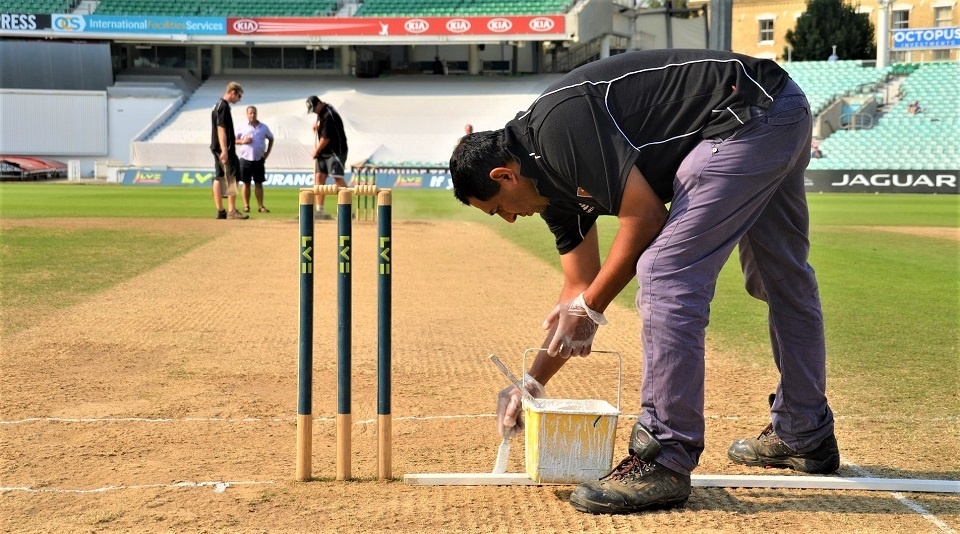
My Favourite Sport Cricket – A Guide for U.S. Travelers
Best Cricket Websites
Any cricket enthusiast must keep up with cricket news, scores, and updates. Here are some of the best cricket websites to stay informed:
- ESPN Cricinfo
- Overview: One of the most comprehensive cricket websites, offering live scores, detailed statistics, news, and expert analysis.
- Features: Ball-by-ball commentary, player and team profiles, historical data, and in-depth articles.
- Website: ESPN Cricinfo
- Cricbuzz
- Overview: Popular for live scores, match commentary, and video content.
- Features: News updates, analysis, player statistics, and match schedules.
- Website: Cricbuzz
- Wisden
- Overview: Known as the “Bible of Cricket,” it offers a wealth of historical data and expert opinions.
- Features: In-depth articles, player profiles, match updates, and historical records.
- Website: Wisden
- BBC Sport – Cricket
- Overview: Provides comprehensive coverage of international and domestic cricket.
- Features: Live scores, news, analysis, and video highlights.
- Website: BBC Sport – Cricket
- ICC Official Website
- Overview: The official website of the International Cricket Council.
- Features: Official rankings, news, live scores, and information about ICC events.
- Website: ICC Cricket
- KreedOn
- Overview: Focuses on providing updates, news, and insights about various sports, including cricket.
- Features: Detailed articles on cricket, player interviews, and analysis.
- Website: KreedOn
- Cricket Betting Advice
- Overview: Offers comprehensive insights on cricket matches, betting tips, and analysis.
- Features: Betting tips, match predictions, and detailed analysis of cricket games.
- Website: Cricket Betting Advice
How to Watch Cricket World Cup in the USA
Watching the ICC Cricket World Cup in the USA is possible through various platforms that offer live streaming and broadcast services.
ICC World Cup Live
The ICC World Cup is one of the most-watched cricket tournaments globally, and catching it live is essential for fans. Here’s how you can watch it live:
- Willow TV
- Overview: Willow TV is the premier broadcaster for cricket in the USA.
- Subscription: Available through various cable providers and as a standalone subscription.
- Features: Live streaming of all major cricket events, including the ICC World Cup, with highlights and replays.
- Website: Willow TV
- ESPN+
- Overview: ESPN+ occasionally streams cricket matches, including select World Cup games.
- Subscription: A monthly subscription with access to a wide range of sports content is required.
- Features: Live streaming, on-demand replays, and highlights.
- Website: ESPN+
- Hotstar
- Overview: Hotstar provides extensive coverage of cricket matches, including the ICC World Cup.
- Subscription: Available as a standalone service in the USA.
- Features: Live streaming, match replays, and highlights.
- Website: Hotstar USA
- Sling TV
- Overview: Sling TV offers Willow TV as part of its sports package.
- Subscription: A Sling TV subscription is required with the additional sports package.
- Features: Live streaming of cricket matches and other sports content.
- Website: Sling TV
By using these platforms, cricket fans in the USA can enjoy live coverage of the ICC World Cup and other major cricket events, ensuring they never miss a moment of the action.
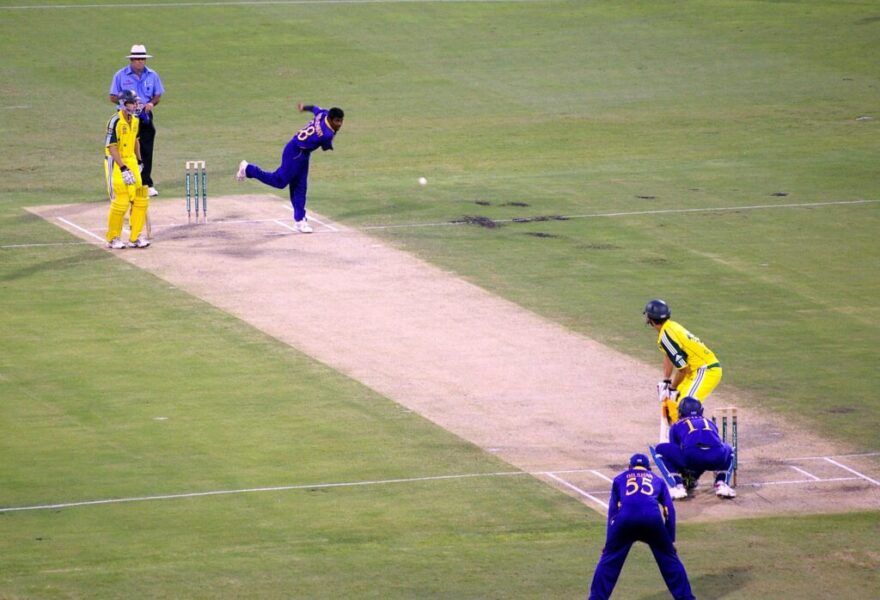
India vs Pakistan
The India vs Pakistan cricket rivalry is one of the most intense and storied in sports. From World Cup showdowns to epic encounters in other tournaments, these matches capture the imagination of millions.
Whether you’re catching a live match on Willow TV or reliving historic moments, the excitement and passion of India vs Pakistan cricket are unparalleled.
India vs Pakistan Cricket: A Rivalry Like No Other
Cricket, my favourite sport cricket, features one of the most intense rivalries in sports history: India vs Pakistan. This rivalry transcends the sport, involving deep-seated historical, political, and cultural factors. Here’s an in-depth look at this iconic rivalry, its key moments, and how to watch the matches.
India vs Pakistan Cricket World Cup
The India vs Pakistan cricket matches in the ICC World Cup are among the most highly anticipated and watched events. The rivalry adds an extra layer of excitement and pressure to these matches.
- Notable World Cup Matches:
- 1992: The first World Cup meeting between the two sides, India won by 43 runs.
- 2003: India chased Pakistan’s target with a stellar performance by Sachin Tendulkar.
- 2011: India defeated Pakistan in the semi-finals and won the World Cup.
- 2015: India continued their winning streak against Pakistan with another victory.
- 2019: India won convincingly, maintaining their unbeaten record against Pakistan in World Cup matches.
PK vs India / Pak vs Ind
The matches between Pakistan (PK) and India (IND) are often referred to in various formats, including PK vs India, Pak vs Ind, and Pak vs India. These matches are known for their high tension and drama.
- Asia Cup Clashes: Regular encounters in the Asia Cup, with memorable matches and intense competition.
- Champions Trophy: Notably, Pakistan defeated India in the 2017 ICC Champions Trophy final to win their first title.
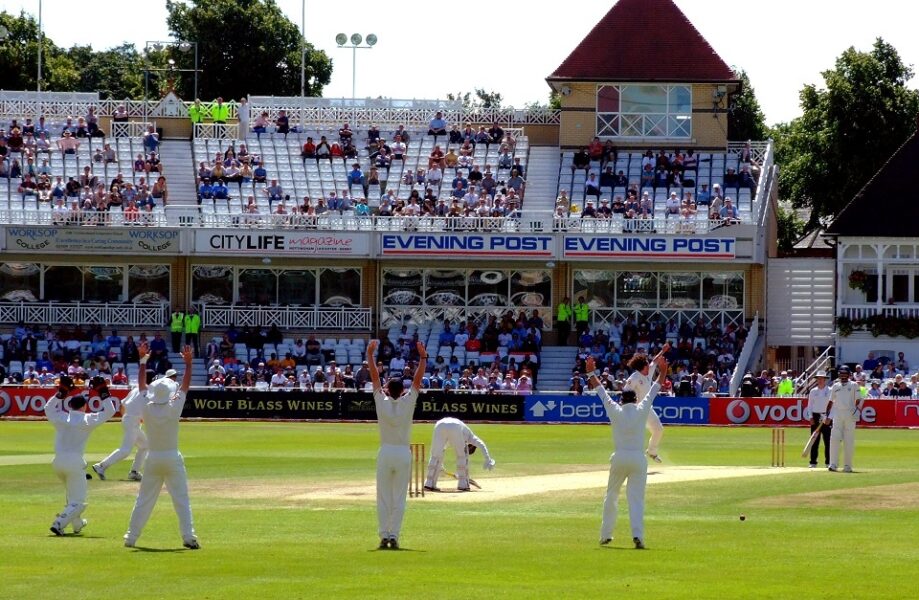
My Favourite Sport Cricket – A Guide for U.S. Travelers
Live Match
Watching a live match between India and Pakistan is a thrilling experience. Here are some platforms to catch the live action:
- Willow TV: Comprehensive coverage in the USA.
- Hotstar: Live streaming with high-quality video and multiple commentaries.
- ESPN+: Occasionally streams live matches and provides highlights.
Pakistan World Cup
Pakistan has a storied history in the ICC World Cup. Their most notable achievement was winning the 1992 World Cup under Imran Khan’s leadership. The team has consistently been a strong contender in subsequent tournaments.
Pakistan National Cricket Team vs India National Cricket Team Timeline
The timeline of matches between the Pakistan national cricket team and the India national cricket team is filled with memorable encounters and historic moments:
- 1952: The first Test series between India and Pakistan.
- 1978: Resumption of cricketing ties after a long hiatus.
- 1986: The famous Sharjah Cup match where Javed Miandad hit a last-ball six to win for Pakistan.
- 2004: Historic tour where India played a full series in Pakistan after 15 years.
- 2007: T20 World Cup final, India won in a nail-biting finish.
- 2011: World Cup semi-final, India won and later clinched the title.
- 2017: Pakistan defeated India in the Champions Trophy final.
How to Watch India vs Pakistan Matches
In the USA
For fans in the USA, watching India vs Pakistan matches live is possible through several streaming services:
- Willow TV: The go-to broadcaster for cricket in the USA.
- Hotstar: Offers live streaming of major cricket matches, including India vs Pakistan.
- ESPN+: Occasionally streams cricket matches, including marquee events like India vs Pakistan.
Cricket 101 Recap
Cricket is played between two teams of eleven players on a circular or oval-shaped field, with a pitch at the center. The primary objective is to score more runs than the opposing team. Here’s a breakdown of the basic elements of cricket:
- The Pitch: A 22-yard (20.12 meters) long and 10 feet (3.05 meters) wide rectangular area in the center of the field where most of the action occurs.
- Wickets: Each end of the pitch has three stumps topped by two bails, collectively known as the wicket.
- Innings: Each team bats and bowls. An innings consists of a team trying to score runs while the other team tries to prevent this and dismiss the batsmen.
- Overs: Each over consists of six legal deliveries bowled by the bowler. After six deliveries, a different bowler bowls from the opposite end.
- Runs: Scored by hitting the ball, running between the wickets, or hitting boundaries. Four runs are awarded if the ball hits the ground before reaching the boundary, and six runs if it crosses the boundary without touching the ground.
- Dismissals: Ways to get a batsman out include being bowled, caught, run out, LBW (leg before wicket), and stumped.
- Fielding Positions: Key positions include slips, gully, point, cover, mid-off, mid-on, square leg, fine leg, and third man.
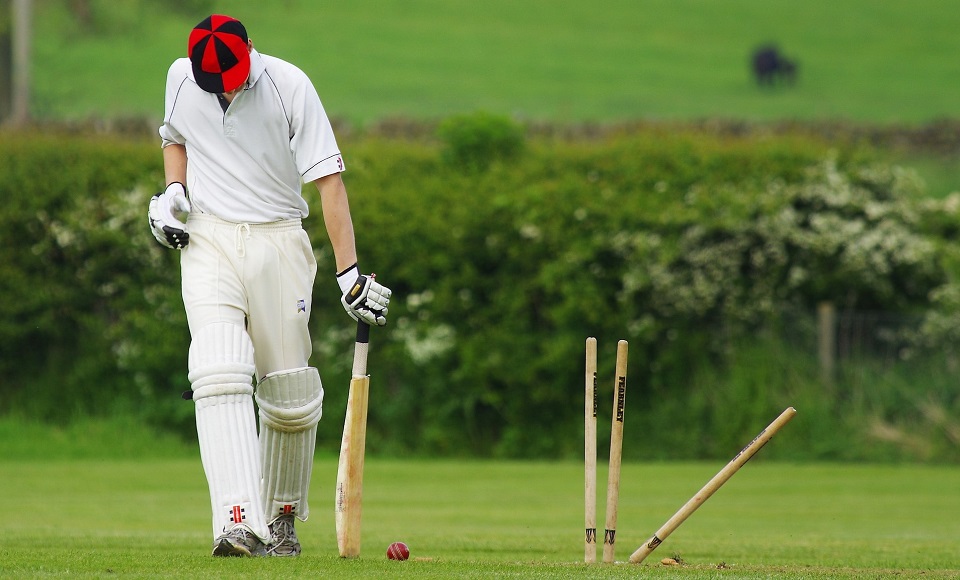
Cricket FAQs
Here are some frequently asked questions (FAQs) about cricket to help you understand the game better:
1. What is cricket?
Cricket is a bat-and-ball sport played between two teams of eleven players each on a circular or oval-shaped field. The objective is to score more runs than the opposing team. The game involves batting, bowling, and fielding.
2. How many players are on a cricket team?
A cricket team consists of eleven players. This includes batsmen, bowlers, and all-rounders who can perform both roles.
3. What are the different formats of cricket?
- Test Matches: Last up to five days with each team batting twice.
- One-Day Internationals (ODIs): Each team bats for a maximum of 50 overs, typically lasting about 8 hours.
- Twenty20 Internationals (T20Is): Each team bats for a maximum of 20 overs, usually lasting around 3 hours.
4. What is an over in cricket?
An over consists of six legal deliveries bowled by the same bowler. After six deliveries, another bowler takes over from the opposite end.
5. What are the basic rules of cricket?
- Scoring Runs: Runs are scored by hitting the ball and running between the wickets or hitting boundaries.
- Wickets: Each team tries to score runs while the opposing team tries to dismiss the batsmen.
- Dismissals: Ways to get a batsman out include bowled, caught, run out, LBW (leg before wicket), and stumped.
6. What is a wicket?
A wicket consists of three stumps and two bails. It is placed at both ends of the pitch. The term “wicket” can also refer to the dismissal of a batsman.
7. How long does a cricket game last?
- Test Matches: Up to five days.
- ODIs: Around 8 hours.
- T20 Matches: About 3 hours.
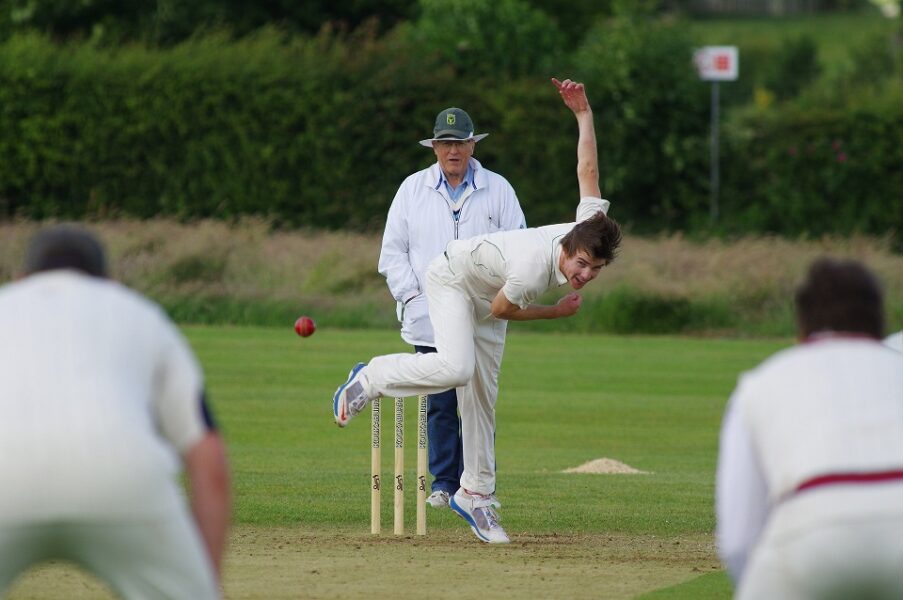
My Favourite Sport Cricket – A Guide for U.S. Travelers
8. What is the weight of a cricket ball?
A cricket ball weighs between 155.9 and 163 grams (5.5 to 5.75 ounces).
9. What is the length of a cricket pitch?
The length of a cricket pitch is 22 yards (20.12 meters).
10. What are the different fielding positions in cricket?
Key fielding positions include slips, gully, point, cover, mid-off, mid-on, square leg, fine leg, and third man. Each position has a specific role in preventing runs and taking catches.
11. How is a batsman dismissed in cricket?
A batsman can be dismissed in several ways:
- Bowled: The ball hits the stumps.
- Caught: The ball is caught by a fielder without bouncing.
- Run Out: The fielders hit the stumps with the ball while the batsman is outside the crease.
- LBW (Leg Before Wicket): The ball hits the batsman’s leg in line with the stumps.
- Stumped: The wicketkeeper removes the bails while the batsman is out of his crease.
12. What equipment is needed to play cricket?
Essential cricket equipment includes a bat, ball, stumps, protective gear (pads, gloves, helmet), and proper cricket shoes. A comprehensive cricket kit ensures players have all the necessary equipment.
13. What is a boundary in cricket?
A boundary is the edge of the playing field. Hitting the ball to the boundary along the ground scores four runs, while hitting it over the boundary without bouncing scores six runs.
14. What is a century in cricket?
A century refers to a batsman scoring 100 or more runs in a single innings.
15. How can I watch cricket in the USA?
You can watch cricket in the USA through various platforms such as Willow TV, ESPN+, Hotstar, and Sling TV, which provide live streaming and coverage of major cricket events.
For more detailed information, you can visit:
These resources offer comprehensive coverage of cricket news, scores, rules, and updates.
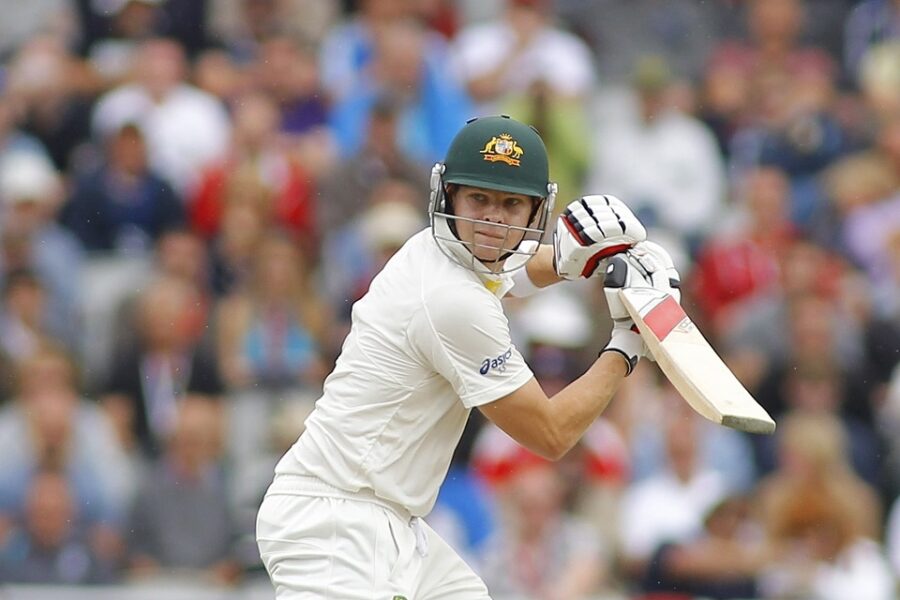
My Favourite Sport Cricket – A Guide for U.S. Travelers
Cricket, my favorite sport cricket, is a captivating game that combines athleticism, strategy, and tradition. For U.S. travelers, understanding the basics of cricket can open up a new world of sporting culture, especially when visiting cricket-loving nations like India, England, or Australia.
Whether you are catching a live match, learning about the storied India vs. Pakistan rivalry, or exploring the best cricket websites, knowing Cricket 101 will enhance your appreciation and enjoyment of the sport.
Engaging with cricket allows you to experience the thrill of a live match, the strategic depth of Test cricket, and the excitement of T20 games. Resources like ESPN Cricinfo, Cricbuzz, and Hotstar provide comprehensive coverage and are great starting points for anyone new to the sport.
As you dive deeper into cricket, you’ll discover why millions love it and how it can offer endless enjoyment as a spectator and participant.

Sam Spanellis, a dynamic UK travel writer, explored Europe before settling in Queensland, Australia. Here, he discovered stunning beaches, fueling his love for sand and sunshine. He writes about travel and transportation, always seeking cost-effective ways to explore the world.




![How to Use Apple AirTags as Luggage Tracking Tags - [year] Update](https://theflightguy.com/wp-content/uploads/2024/06/image-140-390x220.png)
